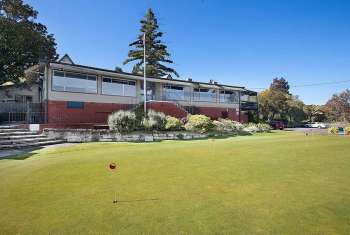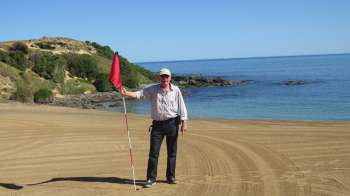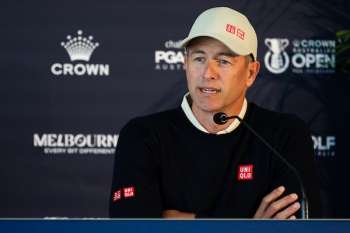More public golf under threat, with Sydney’s Marrickville Golf Club set to lose 9 holes.
In what has become a frighteningly regular occurrence, local newspapers in Australia are again reporting that a popular metropolitan public golf course is set to lose some of its holes for alternate sporting purposes. According to Sydney’s Daily Telegraph, in this most recent case the Marrickville Golf Club’s immediate future is in doubt after state planners suggested 9 holes could be repurposed for community open space, or to provide additional sporting fields.
Not surprisingly, the club has come out swinging suggesting that such a proposal would negatively impact more than just its 475 current members. Said Club President Eddie Lakiss, “even if they decide to take us to nine holes it will kill this club, full stop. It will reduce our membership and social golf numbers because people want to play 18 holes.”
What’s apparent from this recent article, and others on the plight of public course golf in Australia, is that as our metropolitan areas continue to expand, the number of golf holes available for public play is set to decline. Though prestigious private club members and, apparently, governing officials, seem unlikely to notice the loss of public golf courses like Marrickville, our game will struggle to attract new participants without decent public access golf in major cities. Whether that’s a concern for Golf Australia and the various state bodies is unclear, given the apparent lack of action or lobbying on their part.
It might be unfair on some governing officials, but it doesn’t appear as though the recent spate of proposed and partial course closures has made our game’s administrators overly anxious. A scroll through the News section on the Golf Australia website this very day is revealing. Alongside feel good stories about blind golf, an albatross in the Northern Territory, R&A rule changes and golf’s fundraising capabilities, are 24 stories about professional or elite level amateur golf. The second news page features two items on the excellent ‘Inside the Ropes’ podcast, alongside 15 articles related to elite golf and just one story on the junior MyGolf program.
Remembering that Golf Australia’s own mission statement says the following: “Our goal is to raise the level of interest and participation in the game from grassroots golfers through to the elite levels, spectators, volunteers and associated industry bodies.” The lack of action and concern at the highest levels in Australia should be a worry for all golfers, not just public players. Our game has slipped further and further from the mainstream in recent times, and without active and effective advocacy at government level, an argument for the preservation of public land golf becomes fairly difficult.
While revelling in the success of Australia’s elite golfers is an easy trap to fall into, as administrators we need Golf Australia to focus on participation and those genuine grassroots issues, and to act decisively and urgently on behalf of the game. Somebody needs to champion our cause, and highlight the many positive benefits of golf, be they social, cultural, health, environmental or economic.
As AFL, Rugby, Netball, Cricket and other sporting administrators look to feast on existing public access golfing land, it would be nice to know that Golf Australia had a plan to stave them off. At the very least, it would be nice for them to care less about a T32 on the PGA Tour and more about retaining, where possible, an 18 hole public course for grassroots Sydney golfers.
From the Daily Telegraph article:
Back to NewsA POPULAR inner west golf course could disappear after bureaucrats recommended it be “re-used” to fix a shortage of footy fields and park land.
Or, State Government planners said, the 18-hole Marrickville course could be cut to just nine holes to create more community open space.
But club officials have vowed to fight the proposals, saying that even reducing the size of the course, on the banks of the Cooks River, will end up “killing” it.
The idea to transform the course, on parcels of land owned by the Inner West Council and the Government, is contained in the Department of Planning’s draft Sydenham to Bankstown Urban Renewal Corridor Strategy.
As part of the strategy about 8500 new homes would be built around new Sydney Metro stations at Marrickville and Dulwich Hill, leading to a population surge over the next 20 years.
The renewal strategy said the “future of Marrickville Golf Course should be considered by the Inner West Council as a potential source of additional open space”.
The Council leases the course to Marrickville Golf Club on a six-month rolling lease.
“Future options could include reusing this area as new open space for the community (or) reducing the size of the golf course to incorporate new areas of accessible open space,” the strategy states.
“Given the cost and limited opportunity of purchasing new open space in the Inner West Council area, this could be seen as a potential solution to providing improved local amenity to support the projected increase in local population.”
In 2012 a proposal put to the former Marrickville Council to carve the course in half to allow more space for sport and recreation, was shelved.
More News
Who Really Designed Cape Wickham Links?
AGD ranks Cape Wickham #1 in Australia & interviews Duncan Andrews to get full story on course design
Great Dane delivers Crown Australian Open stunner
Denmark’s Neergaard-Petersen with miracle up-and-down on 72nd hole to clinch the Stonehaven Cup
Golf Australia welcomes leading brands as partner line up expands
2025 Crown Aus Open bolstered by a suite of new partnerships ahead of what promises to be an exciting Open
Scott and Smith banking on Sandbelt smarts at Royal Melbourne
Adam Scott and Cam Smith hoping their Sandbelt know-how gives an edge at the 2025 Crown Australian Open





